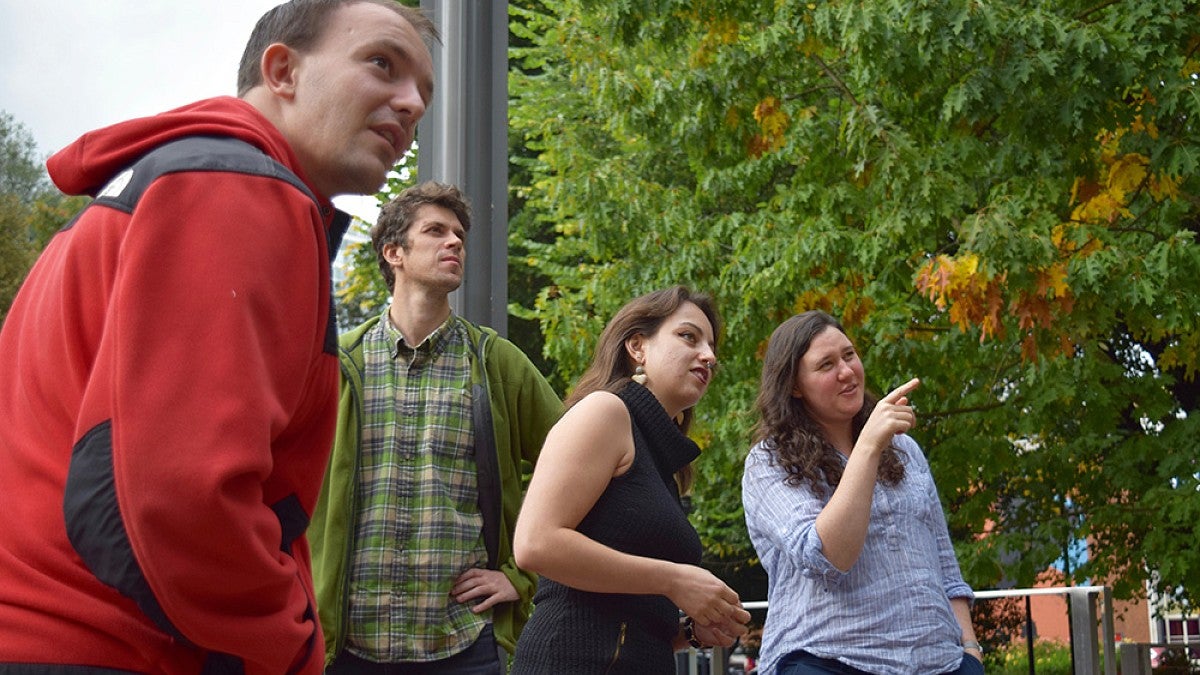History may be a common link among historic preservation graduate students in the Class of 2018, but many also share an interest in public service, global travel and literally digging into projects.
They also share the distinction of being the first cohort of historic preservation students enrolled in Portland, where the program moved this fall.
By relocating to the White Stag Block, the preservation program — now in its 36th year — has “a wonderful opportunity to work with different communities in Portland to identify what elements of the past are important to remember and to think about how the city’s history can be useful in building an even better future,” said James Buckley, the new director of historic preservation. He joins UO from the Massachusetts Institute of Technology.
Buckley sees plenty of opportunity to having the program headquartered in Portland. Along with having the resources of the UO nearby, the program will benefit from the many historic resources in Portland, from historic districts to preservation practitioners and cultural landscapes. It also has the White Stag Block itself, the historic property that serves as the home of UO Portland.
The School of Architecture and Allied Arts still offers a minor in historic preservation, with those classes located in Eugene.
“Portland offers an incredible environment for the study of historic preservation, with lots of really cool historic neighborhoods and tons of terrific archival resources to work with, like the Oregon Historical Society,” Buckley said. “There is also a flourishing professional practice in preservation here, with many alums of our program doing some of the most interesting work, and we look forward to connecting with them.”
For the Portland students — who each bring a unique background — a love for learning and research drew them to program and is a commonality they share.
Caity Ewers spent two summers on an archeology project in Cyprus. Allison Geary has a bachelor’s degree in ceramics and runs a business crafting wooden tools for fiber artists. And Tim Wood has designed museum exhibits.
Wood wants to learn “how we define our concepts of civilization, nature and the wilderness.” Dylan German hopes to “investigate what we choose to preserve as a society and what that says about our cultural memories.” And Ewers looks forward both to the program’s hands-on aspects and “to studying the economic and social impacts of historic preservation.”
The six students kicked off their program by completing the Pacific Northwest Field School over the summer. It was a chance for them to bond as a team through hands-on building repairs and in the archival research projects they’ll undertake during the two-year graduate program.
The field school is an integral part of the Historic Preservation Program. It began in 1995 at the Pete French Round Barn in Eastern Oregon and has since evolved through partnerships with the Oregon Parks and Recreation Department, the Oregon State Historic Preservation Office, the National Park Service and other regional preservation entities.
Each year the field school tackles a preservation project at a new site, training students in hands-on preservation practices as well as helping to preserve historic buildings and structures. As the new term gets underway, the students look forward to learning about historic preservation with the buildings and neighborhoods of Portland serving as another classroom.
“When I saw that it was moving to Portland, where I live and work, I jumped right in,” Ewers said. “But I have always been attracted to the hands-on emphasis of the program and have only heard good things from former graduates.”
The program’s sterling reputation also drew Samantha Gordon’s interest.
“This program is well-renowned with tons and tons of support from faculty and staff. It's very embedded in the community, which is very important to me,” said Gordon, who served two terms with AmeriCorps VISTA after completing her bachelor’s degree in history. “There is a lot of space for historic preservation to reach out to communities and places that have not had their history engaged as much.”
—Story by Marti Gerdes, A&AA Communications


